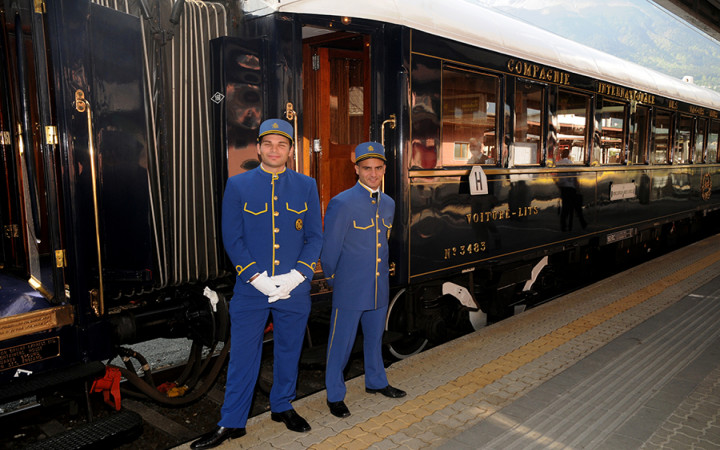Today’s Wonder of the Day was inspired by Duane. Duane Wonders, “How do trains work?” Thanks for WONDERing with us, Duane!
Imagine yourself living over a century ago. You're in Paris, but you need to get to the exotic port city of Constantinople in Turkey. How would you get there?
Airplanes and automobiles aren't prevalent in the late 18th/early 19th century like they are today. If you don't want to walk or ride a horse, a boat is certainly an option. Unfortunately, you tend to get seasick easily.
Luckily, there is another option that will let you travel in comfort and style. All aboard! It's time to take a ride on the Orient Express!
Some people believe the Orient Express was a fictional train made up by authors and filmmakers. Authors such as Graham Greene (Orient Express) and Agatha Christie (Murder on the Orient Express) certainly did their part to make the train world-famous, as did the filmmakers who turned their works into movies and television shows.
However, their inspiration was totally real. Also known by the name Simplon—Orient Express, the Orient Express was a luxury train that traveled a route from Paris to Constantinople (now known as Istanbul) for over eight decades.
Developed by Belgian businessman Georges Nagelmackers, the Orient Express was Europe's first transcontinental express train, initially traveling over 1,700 miles between Paris and Constantinople with stops along the way in Munich, Vienna, Budapest, and Bucharest.
Its maiden voyage was in 1883. With the exception of war-time stoppages, the Orient Express operated up until 1977. Over time, its route changed to include stops in cities such as Milan, Venice, Zagreb, and Belgrade.
Inspired by new American railroad "sleeper cars" developed by George Pullman, the Orient Express featured sleeping, restaurant, and salon cars. They were luxuriously decorated with Oriental rugs, velvet curtains, wood paneling, leather furniture, silk sheets, and wool blankets.
Kings and queens and the elite of European society were drawn to travel on the Orient Express to experience its comfort and fine cuisine. They weren't the only interesting travelers who loved this train, though.
At the height of its popularity, the Orient Express was also known as the "Spies' Express." Apparently, secret agents of all sorts enjoyed hopping from one end of the continent to the other in the lap of luxury. One spy known to have used the Orient Express: Englishman Robert Baden-Powell, who would later use his experiences to found the Boy Scouts.
Although the original Orient Express was shut down in 1977, American James Sherwood revived the train in 1982. Today, it operates as the Venice Simplon—Orient Express, with several routes between London and Venice.




